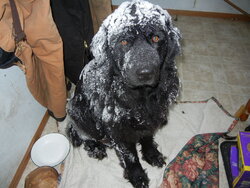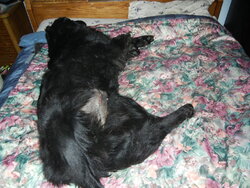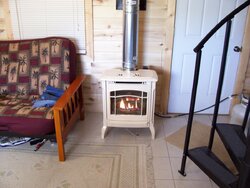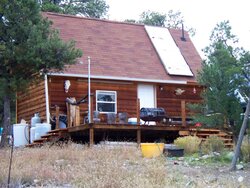Hi all!
I've been researching pellet stoves for the small cabin I'm preparing to have built (in Oregon) and this forum kept coming up in the searches. What a wealth of information! So, I thought I'd register!
I'm going off-grid and will be living in my cabin on a forested mountain (smallish one, lol) full-time and year-round. The winters don't get bitterly cold. The coldest the daytime temps get would be in the high 20s at the peak of winter and the coldest night time temps would be in the teens, generally. Very, very occasionally, a night might go down to the single digits. Rarely below 0.
My cabin will be about 400 square feet. There will be a lofted bedroom. (Real bedroom, not just a sleeping loft.) Most will be open except for the bathroom and a small utility room.
When I say "off-grid," I mean that I will have a 1.8 KwH solar power system supplying my electrical needs, a cistern, and on-site septic. I'm keeping plumbing to a minimum while still having indoor facilities and conveniences. Propane range, LED lighting, etc.
I think that a pellet stove would fit into this situation better than a wood stove because of the ability to fill the hopper and have it run for longer unattended; the ability to buy tons of pellets and have that fuel source stored easily and on-hand; the thermostat capabilities; and the cleaner nature of the burn and the process.
But I really need some guidance on my choices and info on particulars. First, the particulars: I see the stove also as a backup to the gas stove for heating water and (in a rare pinch) cooking. Does the top get hot enough to boil a pot of water within, say, 10 minutes? And would it be a problem to heat water on it daily for doing dishes?
Secondly, the floor of the cabin will be OSB plywood. Does one need a purchased hearth pad under the pellet stove or will installed porcelain tile only over the plywood be fine and not a fire hazard?
Now to stove choices! I've narrowed it down to the Enviro Mini and the Heatilator PS-35 (MAYBE 50 for the hopper size). Are there any others I'm missing in the $1,800-or-less good, reliable stove category for my use?
I'm starting to lean quite a bit toward the Heatilator because it has a Medium setting and a few more automated functions/bells and whistles that I think I'd appreciate. Is that foolish?
Thanks for your help!
I have a mini. It has a built in hearth pad, hopper holds 48 lbs, have 5 heating levels. I have no problem heating 1500 sq ft with it [ open floor plan]. If you use a thermostat you can set it to idle until heat is called for or shut down after 30 minutes than restart.




 ESPECIALLY in Oregon, where wood products are the bread and butter of the local economy and measures are in place to operate responsibly and sustainably. We have an abundance of softwood and hardwood pellet producers. I have to cave to do propane for my range and gas for a generator at the moment but I plan to build up my array and battery storage over time to the point where it can support a convection oven and store more energy for a week. Technologically, we're getting there but haven't quite arrived. Panels have come way down in price and lithium battery storage is the future. The capacity just isn't quite there yet and, being new, the cost is still rather high. I can do one 3 Kw battery now. I hope to add another in parallel or see what larger options may come available. I've read that the Tesla Powerwall has stalled, unfortunately.
ESPECIALLY in Oregon, where wood products are the bread and butter of the local economy and measures are in place to operate responsibly and sustainably. We have an abundance of softwood and hardwood pellet producers. I have to cave to do propane for my range and gas for a generator at the moment but I plan to build up my array and battery storage over time to the point where it can support a convection oven and store more energy for a week. Technologically, we're getting there but haven't quite arrived. Panels have come way down in price and lithium battery storage is the future. The capacity just isn't quite there yet and, being new, the cost is still rather high. I can do one 3 Kw battery now. I hope to add another in parallel or see what larger options may come available. I've read that the Tesla Powerwall has stalled, unfortunately.



 Thanks for the "green" link!
Thanks for the "green" link!
